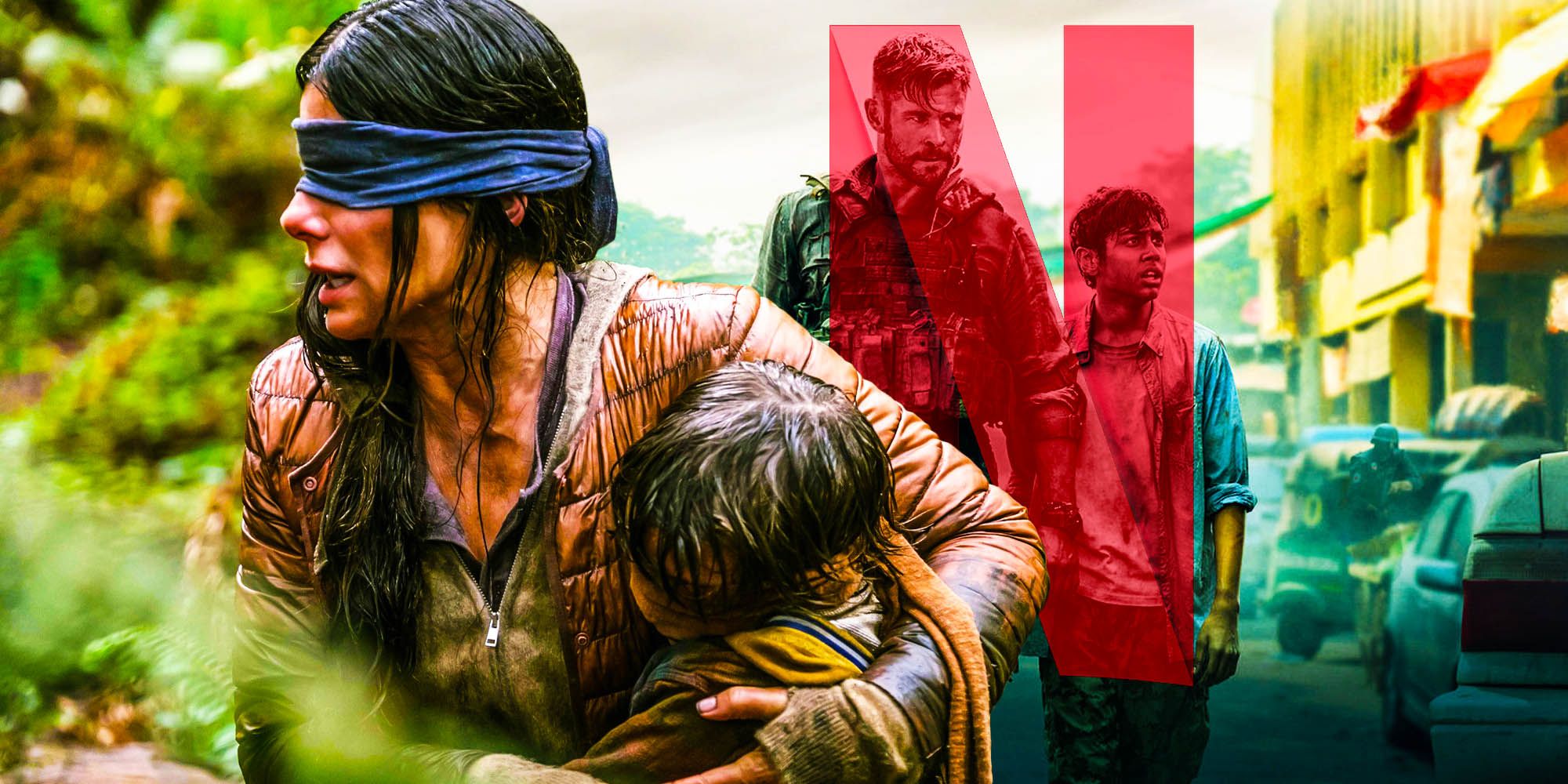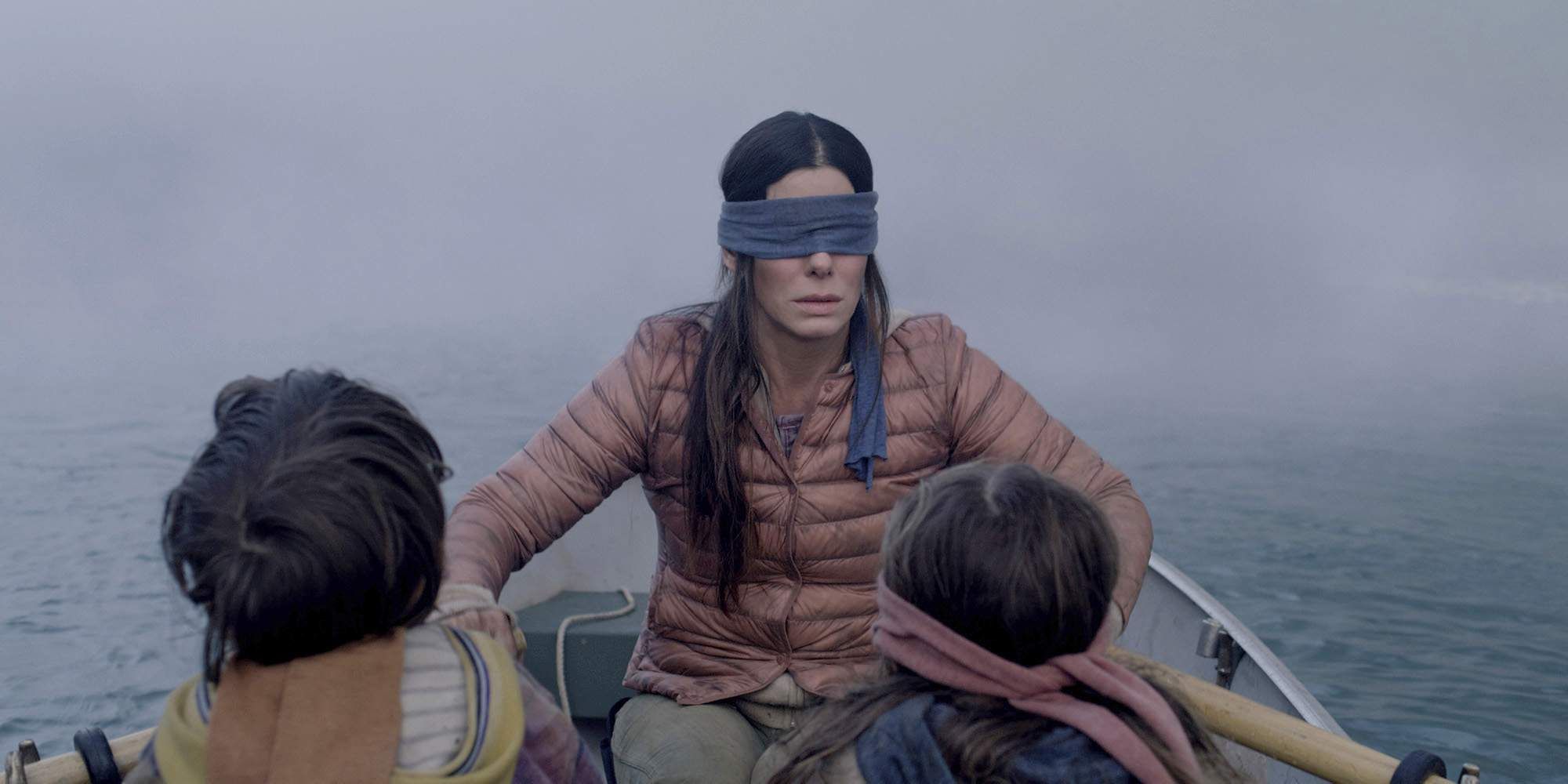Horror-thriller Bird Box was released back in 2018 on Netflix, and three years later, it remains the platform's most popular film, despite Netflix having considerably fewer subscribers at its time of release. Bird Box follows Malorie (Sandra Bullock) as she attempts to survive in a post-apocalyptic world populated by entities that cause violent suicide in anyone who looks at them. It also boasts an impressive supporting cast, with Trevante Rhodes, John Malkovich, Sarah Paulson, BD Wong, Jacki Weaver, and Lil Rel Howery all appearing alongside Bullock. Bird Box received mixed reviews but was popular with audiences.
As reported (via Deadline), Netflix recently revealed that Bird Box wasn't just popular, but it's actually the platform's most-watched film. Chris Hemsworth's Extraction - one of 2020's best action movies - may have beat Bird Box in numbers, but in terms of actual audience engagement (as measured in hours watched), Bird Box comes out markedly ahead. Extraction was streamed 99 million times as opposed to Bird Box's 89 million streams, but users spent 282 million hours watching Bird Box and only 231 million watching Extraction. This level of engagement is even more impressive considering that Netflix only had 139 million subscribers in 2018, as opposed to its current 200 million, but what exactly is it that made Bird Box Netflix's most-watched film?
The Sandra Bullock-led horror-thriller wasn't overly popular with critics, but Bird Box's success stems more from its premise than its overall quality. Not only does the film feature unseen entities that have caused the destruction of society, but it also features a timeline-hopping mystery regarding Malorie and her children. Despite the film's generally uninspired execution, it does possess a gripping hook, and that's the key to its success.
Bird Box immediately captured its audiences' imagination, and it did so primarily with its unseen monsters. At the time of its release, there was much speculation about exactly what the monsters might look like, which essentially became a viral ad campaign for the film. Aside from its sensory-deprivation-focused story, which drew comparisons to the more successful A Quiet Place, Bird Box also simultaneously asked and answered questions through its two concurrent stories. One detailed Malorie's pregnancy and the early days of the apocalypse, while the other showed Malorie and her two children attempting to reach safety. This was both novel and enthralling enough to make Bird Box's audience stick with the film through its weaker moments.
However, Bird Box did have more to offer than just its premise, and that likely contributed to its success, too. The film grappled with some interesting themes, and they were themes that have sated film fans for decades. It was an apocalyptic story that highlighted the ways in which humanity could endure while also showcased just how unpleasant society could become when faced with the end of the world. This has actually led to the theory that Bird Box predicted the coronavirus pandemic, which might also have contributed to its popularity - even if it does perhaps give the film more credit than it's due.
Of course, Bird Box's success could be something far more simple. It mixed an interesting premise with a bankable star and a genre that audiences enjoy. While it may never have impressed critics - or even much of its core audience - it ticked enough boxes in its story and its marketing to keep people watching, and that ultimately proves that when it comes to releasing films to streaming platforms, even mediocre films can be successful under the right conditions. The movie was an undeniable success for Netflix, and even if a Bird Box sequel isn't likely to happen, the film has already proved to be a major win for the streaming giant.


